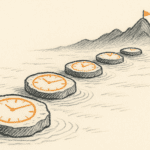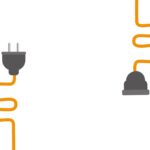Life after coronavirus begins now

Last week I suggested here that because of the coronavirus we may all be staring at a ‘Low-Touch, High-Friction’ world for quite a while. Such a world would have two key characteristics. The first (the touch part) would be that folks would be reluctant to gather in person and in public as freely and easily as before. The second (the friction) would see a world where countries have shrunk back inside their own boundaries, with harder borders and more self-sufficiency and deeper surveillance, and more drags on business flows.
That world is likely to be with us until a proven Covid-19 vaccine is found – and beyond.
What does this mean for you? First, let’s look at where we all are. There are broadly three types of impacts on organizations of this pandemic: positive, negative and calamitous. Most businesses fall into the middle group, so let’s get the other two out of the way first.
There are some blessed firms who have seen an unprecedented boom because of the microbes spreading round the world. The makers of video conferencing and remote working software have never had it so good; health equipment makers and healthcare brands are facing unprecedented demand; video streaming and home-entertainment providers are booming like never before; e-commerce is undergoing a remarkable acceleration.
If you are fortunate enough to be in that group, your only challenge is how to deal with this unexpected wave of demand. Will you ride it, or will it break you? You will face enormous logistical challenges in keeping up with orders and new users, and will need to look furiously for supply sources in a world of broken supply chains; you will find yourself undermanned and overworked, and will need to reconfigure for high volumes. But, who’s complaining? A good problem to have, considering the options…
On the other end of the spectrum are those facing a calamitous impact. For these businesses, Covid-19 arrived like a thunderclap. They decelerated from 100 to zero in what must have felt like a few seconds. Anyone counting on people travelling or gathering in public felt the pain most acutely; airlines, travel agents, event managers, hotels, restaurants, bars. Another group was those whose businesses were ‘high-touch’ – salons, dentists and the like. Their customers disappeared overnight; most are now in suspension. What are they to do?
In many cases, hibernation is the only option. Reduce activity dramatically, keep the minimum number of staff available, plan for a bounce-back when times are better. There is little else that can be done. In richer economies governments are stepping in to provide different types of relief; in emerging markets this shutting down may sadly lead to enormous difficulty.
Now let’s come to the large middle group. These are the businesses facing a negative impact, but not a catastrophic one. Revenues are seriously down; some lines and channels may have closed; others are still going – or have to be developed. The executives in this group have a great deal to think about – at speed. They need to pivot quickly, reshaping the organization to do things, and deliver product, differently. They have to do whatever it takes to get to the other side of this pandemic, intact and ready to rock again. There will be pain; but they can get through the storm.
Here’s the thing, though. Whichever category you’re in, prepare for a very different world post-lockdown. Put the idea of Covid-19 as a passing cloud out of your mind. This phenomenon is more like climate change, not aberrant weather. The new normal will not be the same normal.
If you want to be part of the post-Covid-19 world, you want to be ready for low-touch and high-friction. There will be enormous accelerations in virtual gatherings; in remote working; in healthcare capacity and telemedicine; in online education; in workplace safety; in digital delivery. There will be another set of opportunities that arise as nations retreat into greater self-sufficiency and local solutions.
Those who will capture that world are already preparing for it. They will not wait for the dust to settle and for governments and medics to give the go-ahead. They are already imagining the landscape to come, its shape and its needs; they are learning new skills in readiness; they are preparing themselves for different ways of working.
After every crisis, new players arise to dominate the post-disaster landscape. What they always have in common is that they think and move ahead of time. So what specifically can you do to prepare? Let’s conclude this peek into the future next week.
(Sunday Nation, 26 April 2020)

Buy Sunny Bindra's new book
The X in CX
here »
Popular Posts
- You are who you hang out withSeptember 28, 2025
- Why your mother was right about your anxietyOctober 12, 2025
- The balance sheet that mattersOctober 5, 2025
- Use AI, but don’t lose youOctober 19, 2025
- Born knowing the waySeptember 21, 2025















